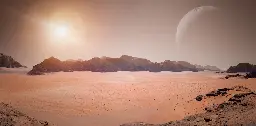Life on alien planets probably wouldn’t experience day and night – here’s how that may change evolution
Life on alien planets probably wouldn’t experience day and night – here’s how that may change evolution
Most planets that have the potential to host life have one side always facing their sun.

Do aliens sleep? You may take sleep for granted, but research suggests many planets that could evolve life don’t have a day and night cycle. It’s hard to imagine, but there are organisms living in Earth’s lightless habitats, deep underground or at the bottom of the sea, that give us an idea what alien life without a circadian rhythm may be like.
There are billions of potentially habitable planets in our galaxy. How do we arrive at this number? The Milky Way has between 100 billion and 400 billion stars.
Seventy percent of these are tiny, cool red dwarfs, also known as M-dwarfs. A detailed exoplanet survey published in 2013 estimated that 41% of M-dwarf stars have a planet orbiting in their “Goldilocks” zone, the distance at which the planet has the right temperature to support liquid water.
Perhaps life on M-Earths would evolve biorhythms synchronised to these cycles. If a circadian clock organises internal biochemical oscillations, it may have to.
Or perhaps evolution would find a weirder solution. We could imagine species that live on the planet’s dayside and migrate to the nightside to rest and regenerate. A circadian clock in space instead of in time.
This thought should remind us that, if life exists out there, it will upend assumptions we didn’t know we had. The only certainty is that it will surprise us.